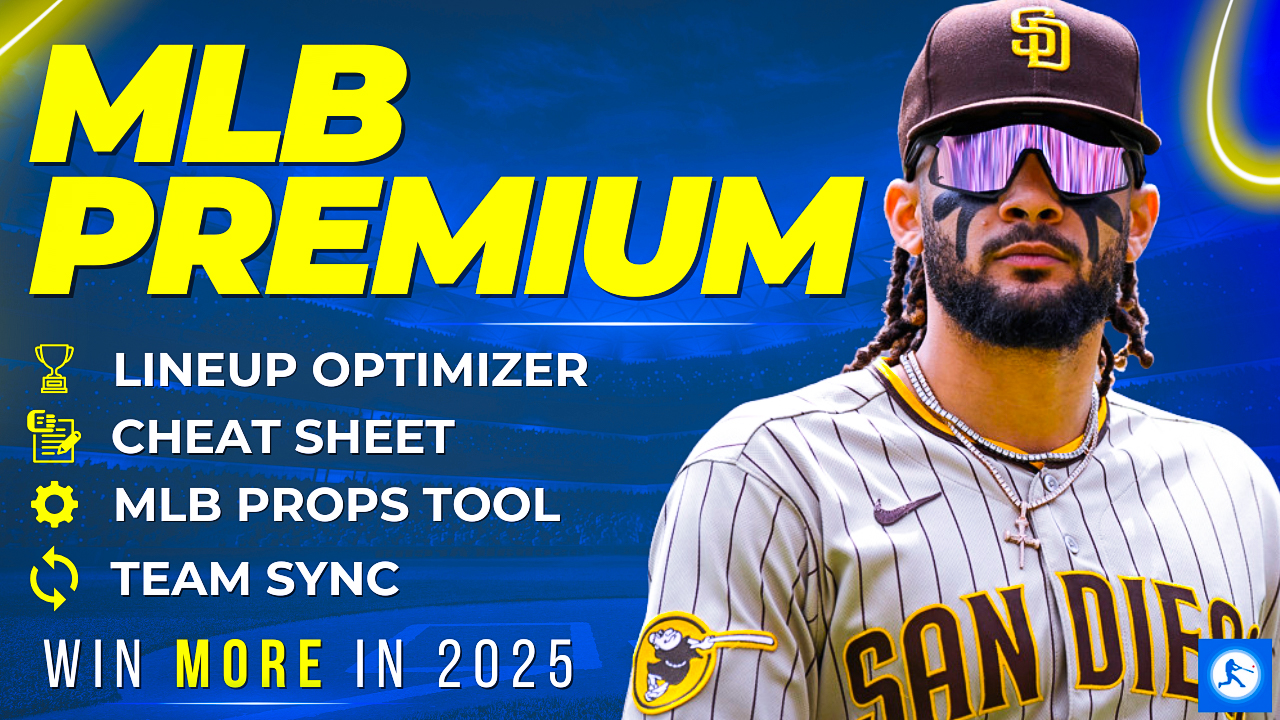Sam Chinitz evaluates hitters who made mechanical adjustments to their swing during the 2021 preseason. Have these changes in batting stance helped and what takeaway might this have for fantasy baseball purposes?
Fantasy baseball is inherently reactive. As proactive as fantasy managers try to be in terms of projecting player performance, there is always an information gap between what MLB players are doing (and plan to do in the future) and the publicly available information that fantasy managers leverage. In no aspect of the game is the reactive nature of fantasy baseball more apparent than in player development.
Existing projection systems are valuable and are becoming more sophisticated, but they still have a glaring weakness: the only information they rely on is past performance. If a player makes a significant adjustment to their mechanics, existing projection systems don’t take that adjustment into account (to the best of my knowledge, at least). That’s not a knock on the existing projection systems, because until recently there wasn’t a great publicly available resource that allowed for the easy tracking of the effects of mechanical adjustments.
Fortunately, Scott Chu, Ben Palmer, and Steve Gesuele at Pitcherlist set up a mechanical adjustment tracker for hitters this offseason called MATH. It’s worth noting that people have tracked mechanical adjustments before -- Jeff Zimmerman likely catches most publicly noted mechanical adjustments in his Mining the News series for Rotographs, and Ray Butler tracks players in the best shape of their life at Prospects365 -- and that those trackers can be used to create a deeper database for more in-depth studies on this topic at some point. Now through about 60 games in 2021, it seemed like a good time to use MATH to analyze the impacts of hitter mechanical adjustments on player performance with the long-term goal of incorporating those impacts into projection systems.
Be sure to check all of our fantasy baseball lineup tools and resources:- Fantasy baseball trade analyzer
- BvP matchups data (Batter vs. Pitcher)
- PvB matchups data (Pitcher vs. Batter)
- Who should I start? Fantasy baseball comparisons
- Daily MLB starting lineups
- Fantasy baseball closer depth charts
- Fantasy Baseball live scoreboard
- Fantasy baseball injury reports
Methodology
In its original form, MATH isn’t well suited for this kind of analysis. To achieve a more suitable dataset, I made the following adjustments. Firstly, I grouped the hitter adjustments into broader categories. Left so specific, it would likely take far longer to generate a representative sample for each adjustment, and grouping the adjustments into broader categories (ideally) preserves the characteristics that make each adjustment effective while allowing for a more usable data sample.
Additionally, I tagged each adjustment with a goal based on player or coach comments. The tagging of goals to adjustments serves two purposes. One is that two hitters might make changes that fall into the same category but at their core are different adjustments. For example, two different hitters might change their leg kicks, but if those leg kick changes are made with different goals in mind (timing vs. balance, for example, where one hitter might shorten their leg kick and the other might focus on making their leg kick path straighter), then they are fundamentally different adjustments and belong in different buckets.
The other reason for tagging goals to each adjustment is to isolate each adjustment's effects on player performance. Some players may make several publicly noted adjustments, and some might make only one publicly noted adjustment but several adjustments that were made without public comment. By grouping adjustments by their stated goal, specific benchmarks can be tied to each adjustment to limit non-adjustment-related noise.
After then removing hitters from MATH who were listed for defensive adjustments, injuries, or pre-2021 adjustments, and limiting the list to hitters who have at least 50 plate appearances in both 2020 and 2021 (through June 6), MATH shrinks down to 62 hitters, spread out thinly across categories and goals. With that in mind, I’ve focused on two pairs of categories and goals with relatively thorough data in the results section of this article: hitters who simplified their swing to improve their timing and hitters who added muscle to improve their raw power.
Results
Overall Changes in Offensive Production
Before getting into specific categories, it’s worth exploring whether or not hitters listed in MATH have larger improvements in offensive production than hitters not listed in MATH. An unweighted average of changes in xwOBA from 2020 to 2021 (through June 6) suggests that that isn’t the case; the average change in xwOBA among hitters in MATH (after excluding defensive adjustments, hitters coming off of injury-plagued seasons, and adjustments made in 2020) from 2020 to 2021 was 0.003 compared to -0.003 for all other hitters -- a difference, sure, but not a statistically significant one.
This isn’t the best way to evaluate the impact of adjustments on hitter performance because xwOBA incorporates significant noise when considering the effects of a specific adjustment. Additionally, there are several data selection-related issues (discussed in more detail in the next section of this article) that make this analysis less than definitive. Still, the lack of a meaningful difference in xwOBA changes between hitters listed in MATH and the rest of the league is notable and suggests that fantasy managers shouldn’t expect significant changes in general hitter performance simply because the hitter made a publicly noted adjustment.
Hitters Who Simplified Their Swings To Improve Timing
Two hitters in MATH made swing-simplifying adjustments (including leg kick reductions) to improve their timing: Michael A. Taylor and Eli White. Although timing adjustments can sometimes be about making higher quality contact, in both Taylor’s and White’s cases the adjustments were made to make more consistent contact. As a result, whiff rate was the benchmark chosen for this category.
| Name | Adjustment | 2020 Whiff % | 2021 Whiff % |
| Eli White | Simplified swing, reduced leg kick | 26% | 39% |
| Michael A. Taylor | Simplified swing, reduced leg kick | 28% | 41% |
Given that both hitters saw their whiff rates rise by about 13 points between 2020 and 2021, it appears as though their simplified swings failed to pay off. Over a larger (and more typical) sample, this would suggest that hitters who simplify their swings to make more consistent contact are not worth (positively) changing existing projections for. For now, though, this kind of adjustment remains worth monitoring.
Hitters Who Bulked Up For Added Power
Two hitters in MATH added muscle to hit the ball harder between 2020 and 2021: Mauricio Dubon and J.P. Crawford.* Given that these hitters attempted to increase their raw power, dynamic hard-hit rate (DHH%) was chosen as the benchmark for this category. For those unfamiliar with DHH%, it’s a metric that adjusts the boundaries for a ball to be considered hard-hit based on launch angle, thereby acting as a better indicator of a hitter’s raw power than other power metrics. The ball changes in 2021 likely affect DHH% for every hitter, though, so I’ve scaled DHH% so that the league average is 100 for each season when making these comparisons.
| Name | Adjustment | 2020 DHH%+ | 2021 DHH%+ |
| Mauricio Dubon | Added 12 lbs of muscle | 37 | 51 |
| J.P. Crawford | Added 10 lbs of muscle | 50 | 16 |
The results here are inconclusive, even if they were to hold for a more robust sample. Both hitters remained well below-average power hitters, but Dubon showed significant improvement in his DHH% (relative to the league average) while Crawford took a significant step backward.
Discussion
Before getting into more details about the future implications of this kind of research, it’s important to note several caveats about the analysis presented in this article. The most obvious is that the sample size is lacking. No category of adjustment had more than three players, and the baseline information for the hitters comes from a 2020 season in which no hitter had more than 267 PA.
Additionally, there is clear sampling bias because the only hitters being analyzed are those who publicly noted and described the adjustments they made. It’s fair to assume that the overwhelming majority of hitters make some adjustment from season to season, but this analysis only considers a small subset of those hitters -- perhaps those most confident in their adjustments. This may also be a reason why there was not a statistically significant difference between the season to season xwOBA changes of hitters on MATH and the league as a whole.
Furthermore, even among hitters who publicly noted their adjustments, there may be other factors than the noted adjustment that contributed to their change in performance from season to season. That’s especially true in this particular analysis, in which each hitter’s baseline information comes from a disrupted 2020 season.
Still, this article demonstrates an early version of what should be a valuable framework for accounting for mechanical adjustments in projections going forward. In a fairly simple form, that framework might look something like this (with hypothetical numbers): projection system x, when run without mechanical adjustments considered, expects player y to hit 20 home runs over 600 plate appearances next season. Player y added 10 lbs of muscle to add power in the offseason, though, so his DHH% should increase five points and his home run rate should increase correspondingly.
An even simpler application might look something more like this: a fantasy manager notices that player y simplified his swing to make more consistent contact over the offseason and (assuming that such an adjustment has no measurable positive effect on whiff rate) writes it off as not worthy of consideration instead of boosting that player’s projected fantasy value.
That’s not to say that such an exercise is the best application of this analysis, or even that my category breakdowns and benchmarks are the most effective ones. Nevertheless, this article hopefully provides fantasy managers with a better idea of how to effectively value hitters who publicly note significant mechanical adjustments and helps push the continued systematic collection and analysis of mechanical adjustments.
*It’s worth noting that both of these hitters made additional adjustments to their swings during the offseason. By focusing on DHH%, I’ve (hopefully) isolated the impacts of the muscle gain on performance.
Download Our Free News & Alerts Mobile App
Like what you see? Download our updated fantasy baseball app for iPhone and Android with 24x7 player news, injury alerts, sleepers, prospects & more. All free!

More Fantasy Baseball Advice
 RADIO
RADIO

























